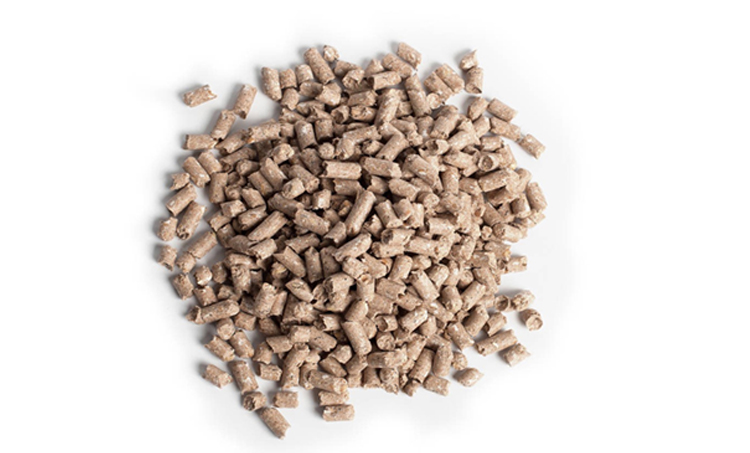The factors affecting production efficiency of feed pellet mill
2022-02-25

Due to process design and operation technology and other problems in feed plant, resulting in the quality and output of finished products can not meet the expected requirements. The particle surface is not smooth, with high powder rate, fragile, and uneven etc. Through practical analysis, the main reasons affecting the benefit of pelleting are as follows.
Raw material
The material with high starch content is easy to be gelatinized. These raw materials, after conditioning and tempering, are sticky and conducive to forming. The raw material with high crude fiber increases the friction of the ring mold, so a certain amount of grease should be added to facilitate the material to pass through the die hole, and the surface of the finished product is smooth. From the pelleting process, if crushing is too fine, the strength of pelleting is increased; If crushing is too coarse, the wear of ring die and roller is increased, and makes the forming difficulty, resulting in low yield, high powder rate. Therefore, different materials need to use different grinding diameters. For livestock and poultry feed, 2.5-3mm sieve plate is recommended for crushing corn. In addition, different raw materials, different formula, the mixing time is also different. Before granulation, mixing uniformity should be noticed, so that the mixing coefficient reaches about 5%.
Feeding control
When the production efficiency becomes low, many feed mills only consider the pelleting problem and ignore the control of incoming materials. In practice, the feed flow rate directly affects the pelleting speed. At this time, it is necessary to find out whether the feed flow is unstable, so as to investigate the cause, effectively eliminate the intermittent situation when feeding, ensure that the pellet mill does not stop, uniformly and fully load works.
Production operation
Adjust the parts of the pellet mill correctly. The ring die and roller space is generally controlled at 0.05-0.30mm, to avoid too small or too large, and noise and affect the material pelletizing. The gap between the upper edge curve of the scraper and the ring die and the ring die cover is basically controlled at 2~3 mm. Open the pellet mill, observe whether there are pellet out of the die smoothly, pay attention to the current change. In order to prevent sundries in the machine from entering the ring die, the discharging door of the machine on the operating door should be opened, and the material mixed with sundries in the machine should be discharged. After the debris material is cleaned, the material can be imported into the ring die.
Ring die
Friction coefficient between material and die wall, moisture content, raw material size, temperature, material plasticity and material compressibility, etc., all these affect the material can be smoothly out of the die. These are closely related to ring die aperture and hole depth. It is recommended that the die hole be compressed at 1:8 ~ 1:13(i.e. the effective thickness ratio of die hole to die). If the compression ratio is too small, the material through the aperture of the time is short, and efficient is high, but it is easy to loose, and with low surface smoothness. On the contrary, the longer the effective length of the compression hole, the greater the material pressure, the higher the tightness of the finished product. But the output declines, the energy consumption will increase. Therefore, users can choose the compression ratio of the ring die according to their own needs. For livestock and poultry feed material, the ring die compression ratio is generally less than 10, and for aquatic feed, ring die compression ratio is generally more than 10.